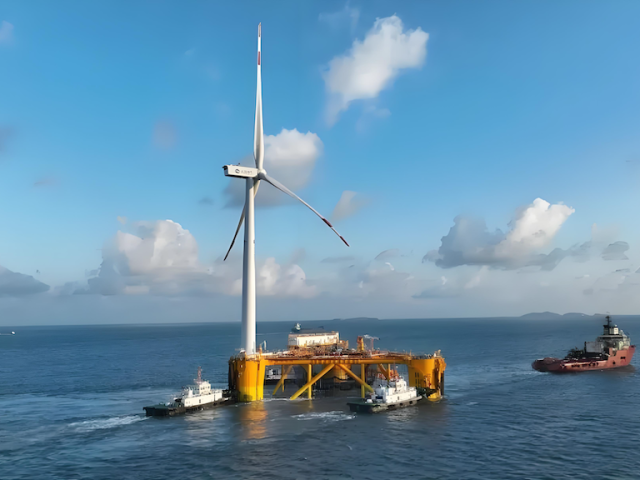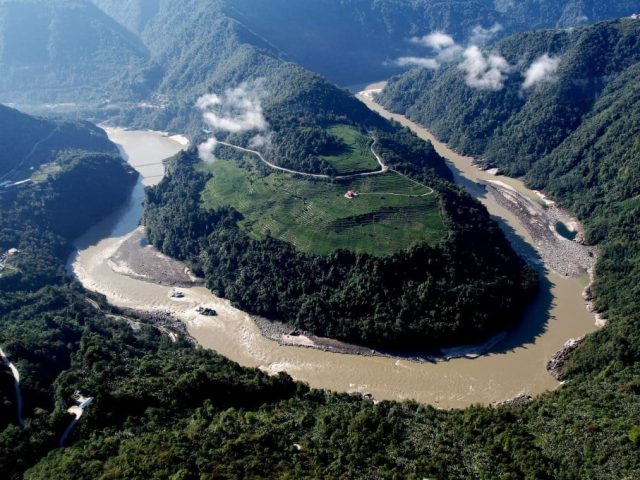According to the China Railway Shanghai Group Co., Ltd., on the morning of September 1, at the construction site of the southern main tower (Tower No. 5) of the Ma’anshan Yangtze River Rail-Road Bridge on Jiangxinzhou Island, Dangtu County, Ma’anshan, Anhui Province, the world’s largest tower crane, the R20000-720, successfully hoisted and precisely positioned a 313-ton steel tower segment onto a concrete tower column at a height of 220.5 meters.
This operation marks the successful installation of the first steel tower segment of the southern main tower of the world’s largest three-tower cable-stayed bridge, signaling the transition of the bridge’s southern main tower to the upper tower column steel structure construction phase.
The Ma’anshan Yangtze River Rail-Road Bridge is a key project of the Chaoma Intercity Railway. The main bridge is designed as a three-tower steel truss cable-stayed bridge with dual main spans of 1,120 meters, making it the world’s first three-tower cable-stayed bridge with spans exceeding one kilometer and the longest steel truss cable-stayed bridge globally. Among the three main towers, Tower Nos. 3 and 5 serve as side towers, standing at heights of 308 meters and 306 meters respectively, while Tower No. 4, the central tower, reaches a height of 345.6 meters.
About Chaoma Intercity Railway
The Chaoma Intercity Railway begins at Chaohu East Station, extends eastward through Hanshan County, Hexian County, Zhengpugang New District, Dangtu County, the Economic Development Zone, Yushan District, and Huashan District, and connects to Ma’anshan East Station. The main line has a total length of 61 kilometers and is designed for a maximum speed of 350 kilometers per hour. Along the route, there are five stations: Chaohu East (existing), Hanshan, Zhengpugang, Ma’anshan South, and Ma’anshan East (existing).
The completion of the Chaoma Intercity Railway is of significant importance in reducing travel time between the Hefei and Nanjing metropolitan areas, improving the regional high-speed rail network, and supporting the implementation of national strategies such as the integration of the Yangtze River Delta and the development of the Yangtze River Economic Belt.


















